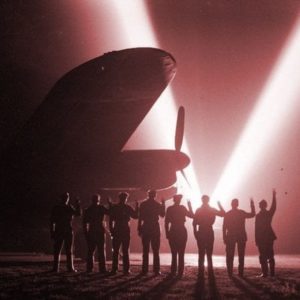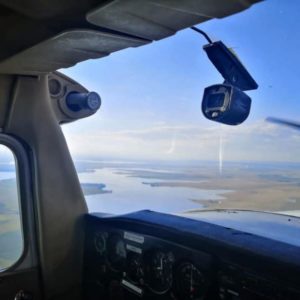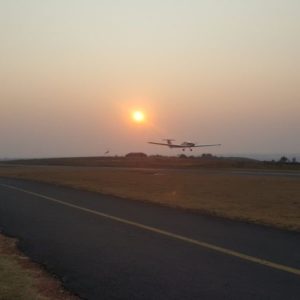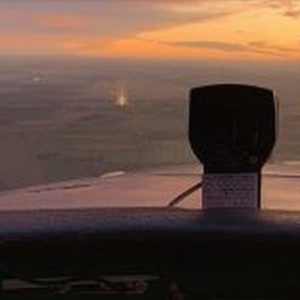No products in the cart.
Night Rating
Showing all 15 results
Filters Sort results
Reset Apply
Pilots wanting to gain a Night Rating are required to have some element of theoretical study as part of the course. The reason for this is that there is no separate written exam for the Night Rating; all of the theory, rules & regulations will have been covered in the initial Air Law & ATC Procedures, & Operational Procedures Courses as part of the initial PPL theoretical knowledge training. In addition, the rules & regulations surrounding Night Flying have changed with… Last Updated: 08-03-2024 | Company / Seller: Location: England ⋅ Colchester ⋅ Europe ⋅ Essex ⋅ South East ⋅ UK | |
Night Rating (10 hours in the Cessna 152): CPL based out of Krugersdorp, South Africa. Last Updated: 01-12-2022 | ||
Night Rating (5 hours in the simulator): CPL Night Rating (5 hours in the simulator): CPL Last Updated: 01-12-2022 | ||
This course is ideal for students requiring additional training for their Night Rating and Instrument Rating. Last Updated: 12-03-2024 | Company / Seller: Location: Nottingham ⋅ East Midlands ⋅ England ⋅ Europe ⋅ Nottinghamshire ⋅ UK | |
5 Hours dual instruction on a Cessna 150a Last Updated: 12-03-2024 | Company / Seller: Location: Nottingham ⋅ East Midlands ⋅ England ⋅ Europe ⋅ Nottinghamshire ⋅ UK |
A Night Rating qualifies a pilot to fly an aircraft a night under VFR (Visual Flight Rules). It’s a 5 hour course which you can take as part of the 45 hour long PPL course. In order to pass the course you have to fly at least 3 hours dual, 1 hour solo and have completed 5 take-offs and landings at night. Night is defines as being 30 minutes before sunrise or 30 minutes after sunset. Before starting your course, don’t forget to pack a torch, since you’ll need it for the pre-flight external checks! You can browse the Flight Training Organisations that offer a Night Rating Course, on the AvPay Flying School Directory.
Night Rating Courses on AvPay
AvPay has a range of Night Rating Courses in the US, Europe, Australia, South Africa and throughout the world. Contact Flying Schools directly on AvPay to compare prices through the Aviation Directories here: https://avpay.aero/directory/
AvPay is a global aviation marketplace that lets you browse a wide selection of Night Ratings. View all of our Flight Training Courses and discover other related Aviation Products & Services here: https://avpay.aero/marketplace/
Can’t find the Night Rating Course you’re looking for? Check-out the Aviation Directories to find an Aviation Company that offers the service you’re looking for: https://avpay.aero/directory/
AvPay: Connecting Pilots with Flying Schools Worldwide!
A Night Rating qualification is required for pilots to fly an aircraft at night or during the period of darkness. Flying at night presents unique challenges due to reduced visibility compared to daytime operations. The absence of natural light and limited lighting sources on the ground can make it difficult to perceive objects, landmarks, and potential hazards. The Night Rating qualification ensures that pilots are trained and competent in handling these specific conditions. When transitioning from a well-lit environment to darkness, the human eye takes time to adjust and achieve optimal night vision. The Night Rating training helps pilots understand the process of visual adaptation and teaches techniques to maximize night vision capabilities. This includes managing cockpit lighting, scanning techniques, and maintaining situational awareness in low-light conditions. The Night Rating qualification equips pilots with the knowledge and skills to identify and mitigate potential hazards associated with nighttime flying. These hazards may include reduced visibility of terrain features, difficult-to-discern obstacles, unlit or poorly lit runways, and changing weather conditions. Understanding these risks and employing appropriate strategies for hazard avoidance is crucial for safe night operations. Night flying often requires reliance on navigation instruments and lighting aids to ensure accurate position awareness and guidance. Pilots pursuing a Night Rating learn to interpret and use instrument panel lighting, navigation aids, and communication systems specific to nighttime operations. This enables them to navigate effectively and maintain positional awareness during night flights. In the event of an emergency at night, pilots need to be proficient in emergency procedures that are specific to nighttime operations. These procedures may include emergency landings, managing equipment failures, handling aircraft systems in low-light conditions, and coordinating emergency services in remote or dark areas. The Night Rating training covers these procedures to enhance pilot preparedness for unforeseen situations. In many aviation jurisdictions, regulatory authorities require pilots to hold a Night Rating qualification to fly an aircraft during night hours. This qualification ensures compliance with aviation regulations and demonstrates that pilots have met the necessary training and experience standards for nighttime operations. Obtaining a Night Rating qualification enhances a pilot’s skills, knowledge, and confidence to operate an aircraft safely during nighttime hours. It enables pilots to effectively manage the challenges associated with reduced visibility, adapt to low-light conditions, recognize hazards, navigate accurately, and handle emergency situations specific to night flying.









